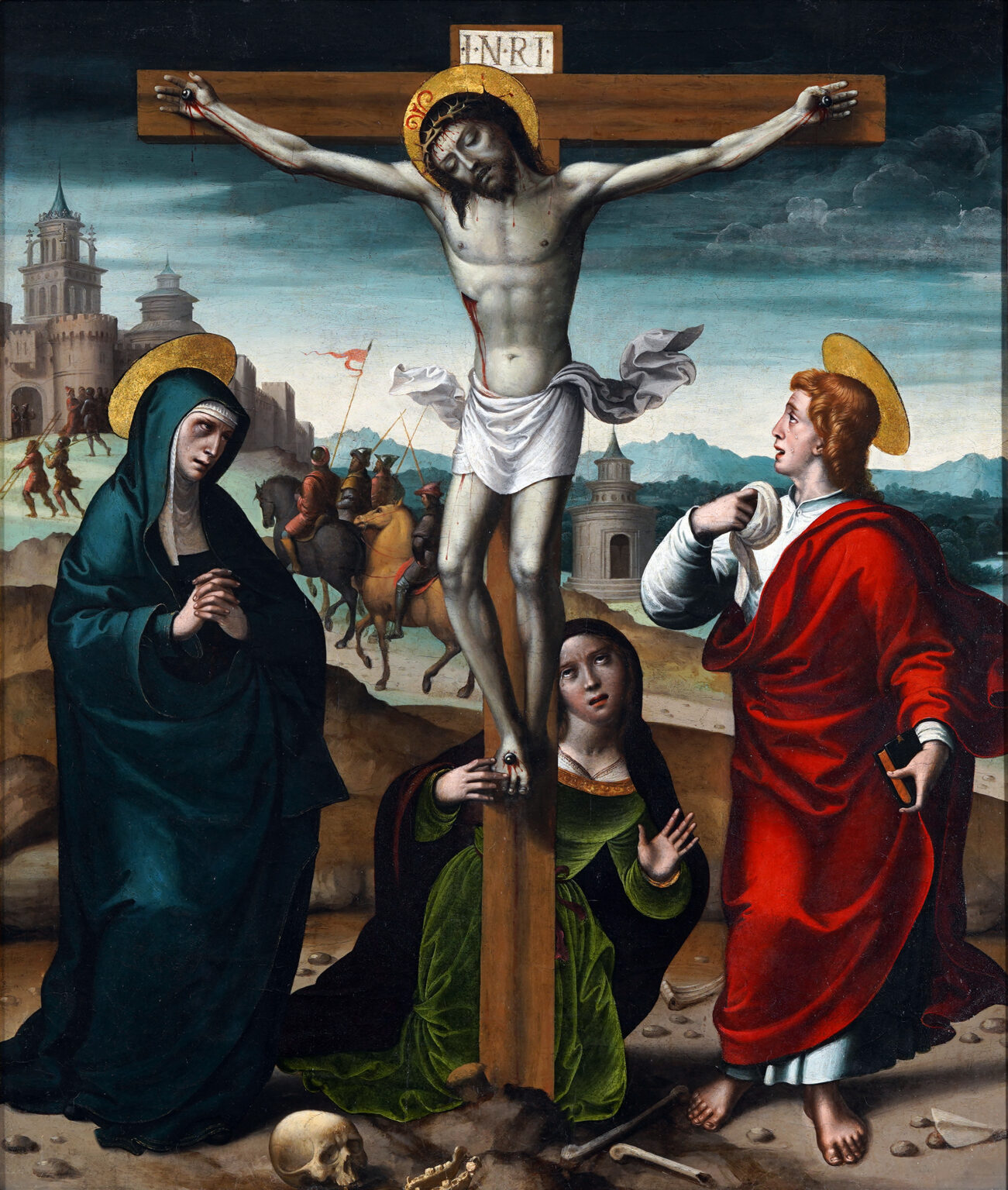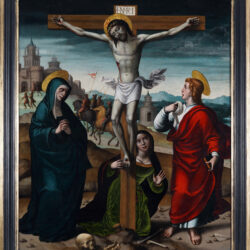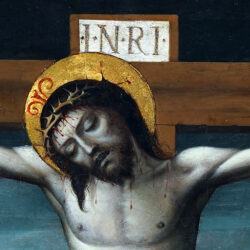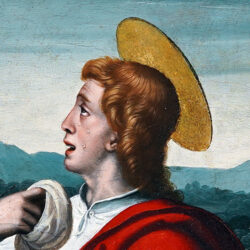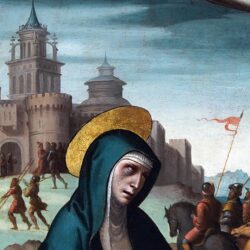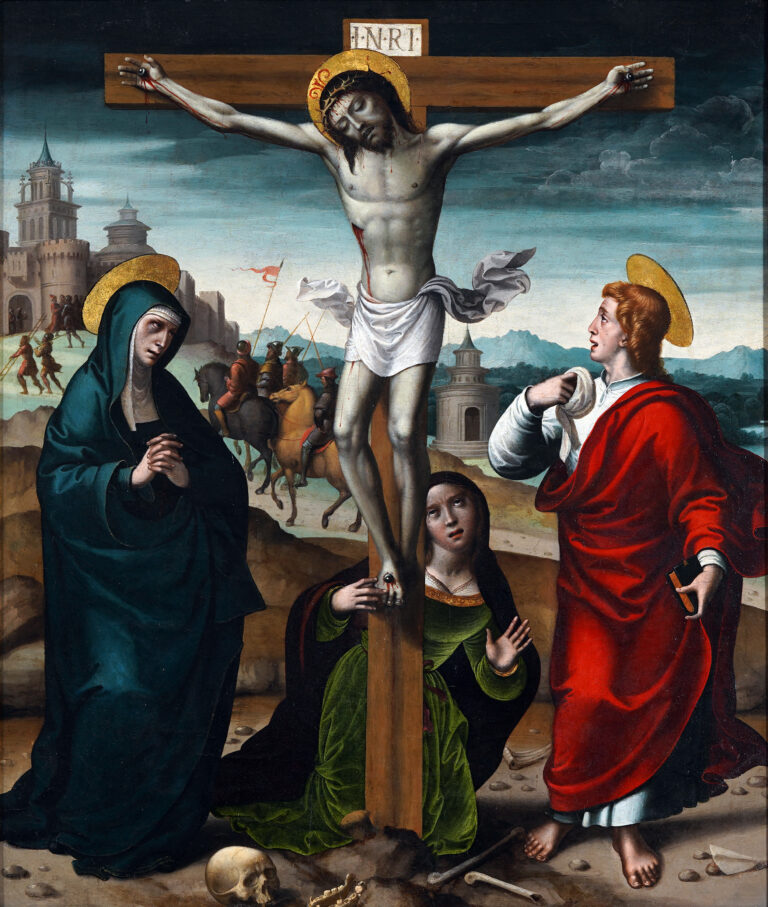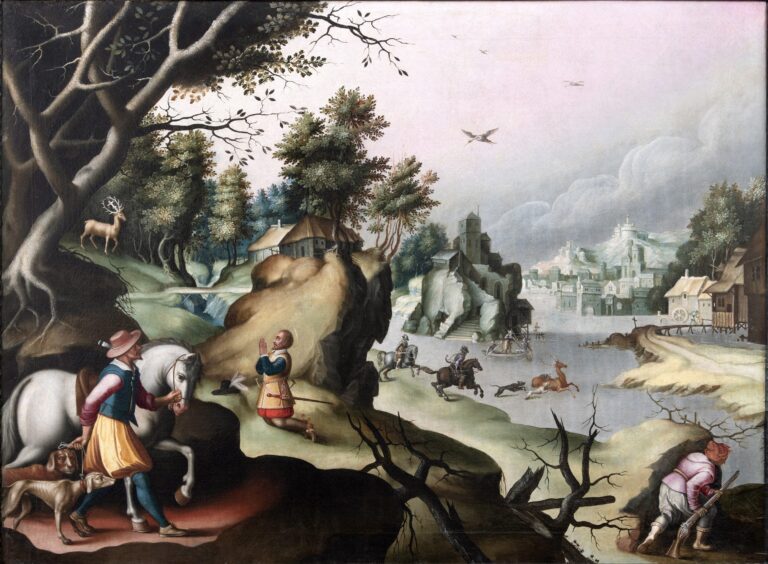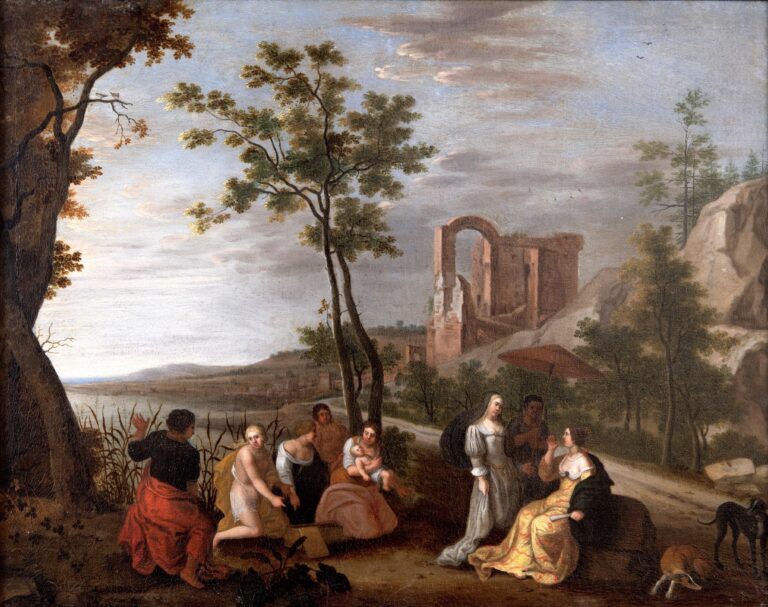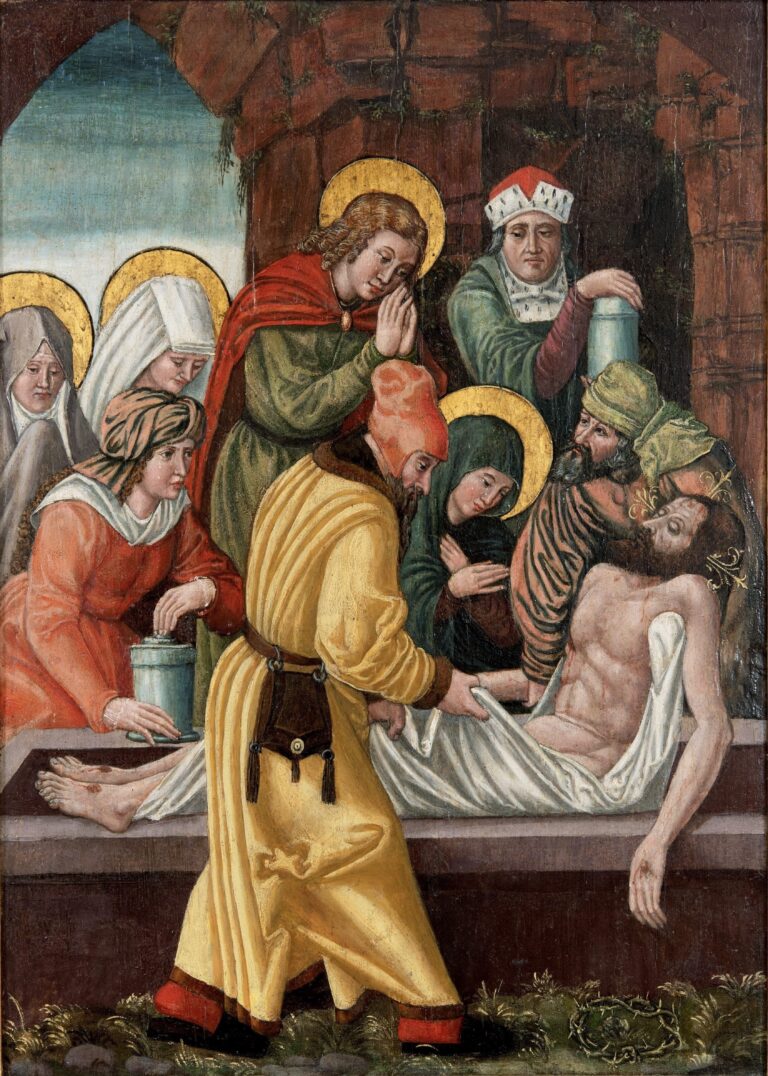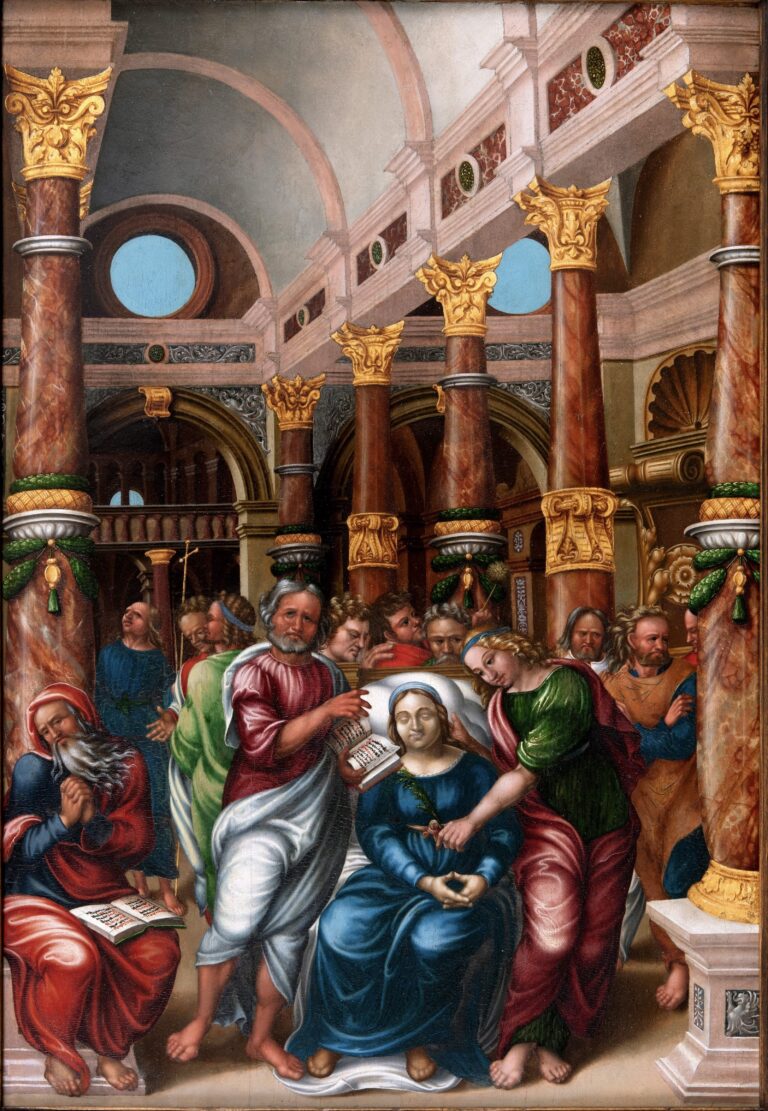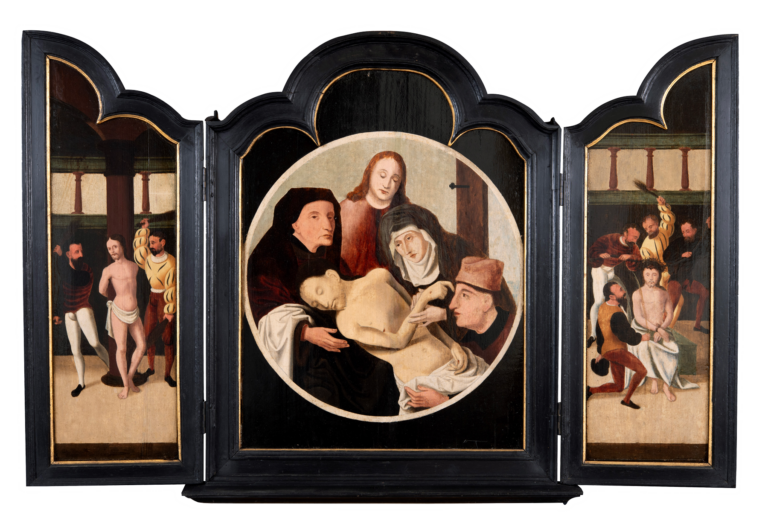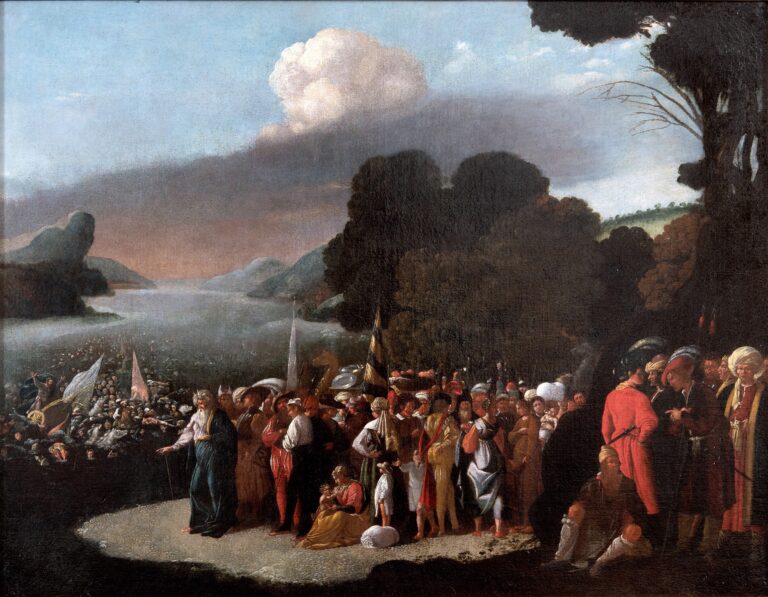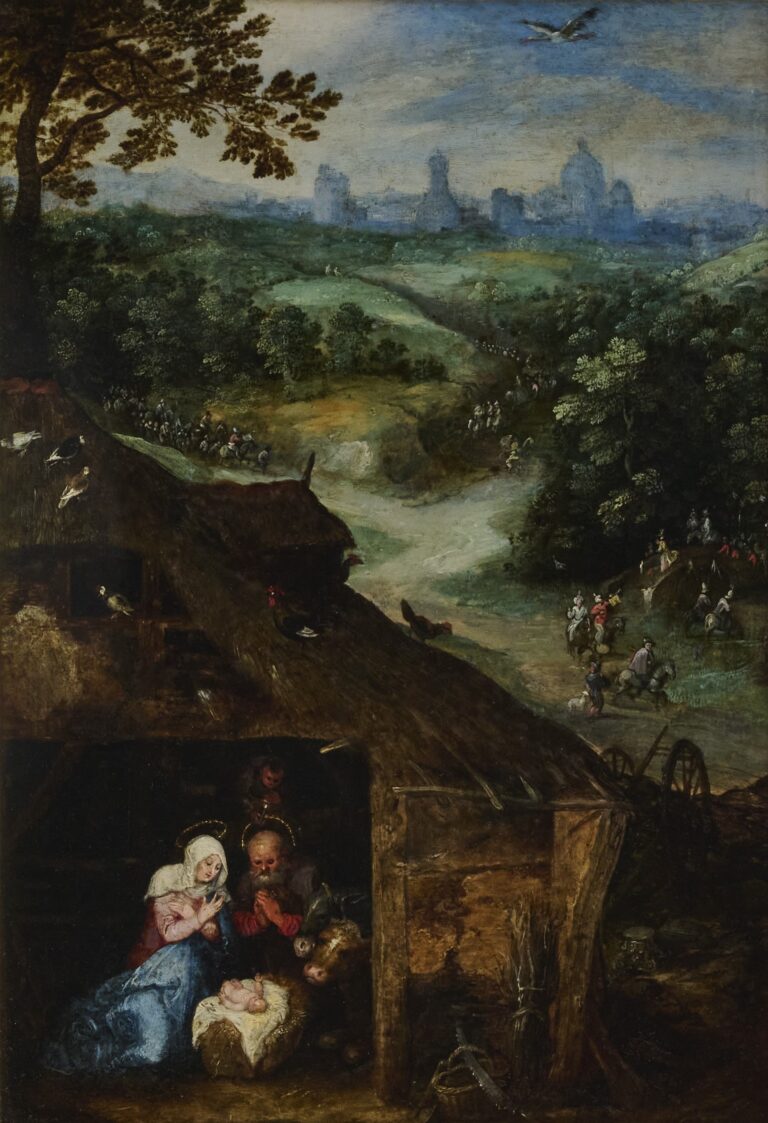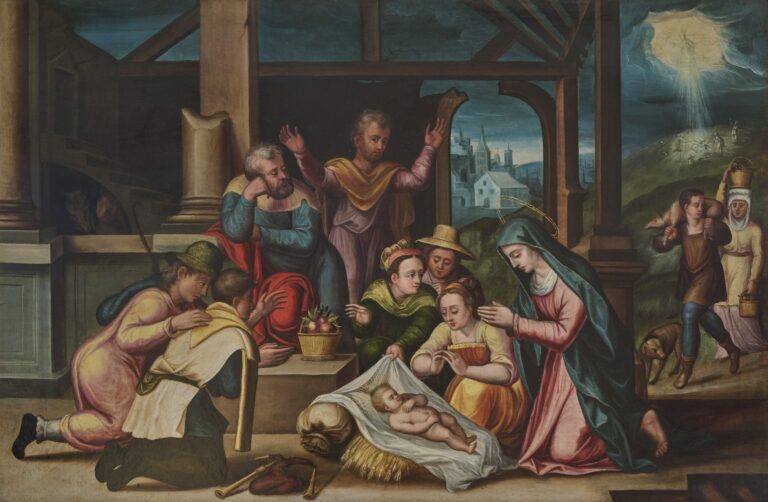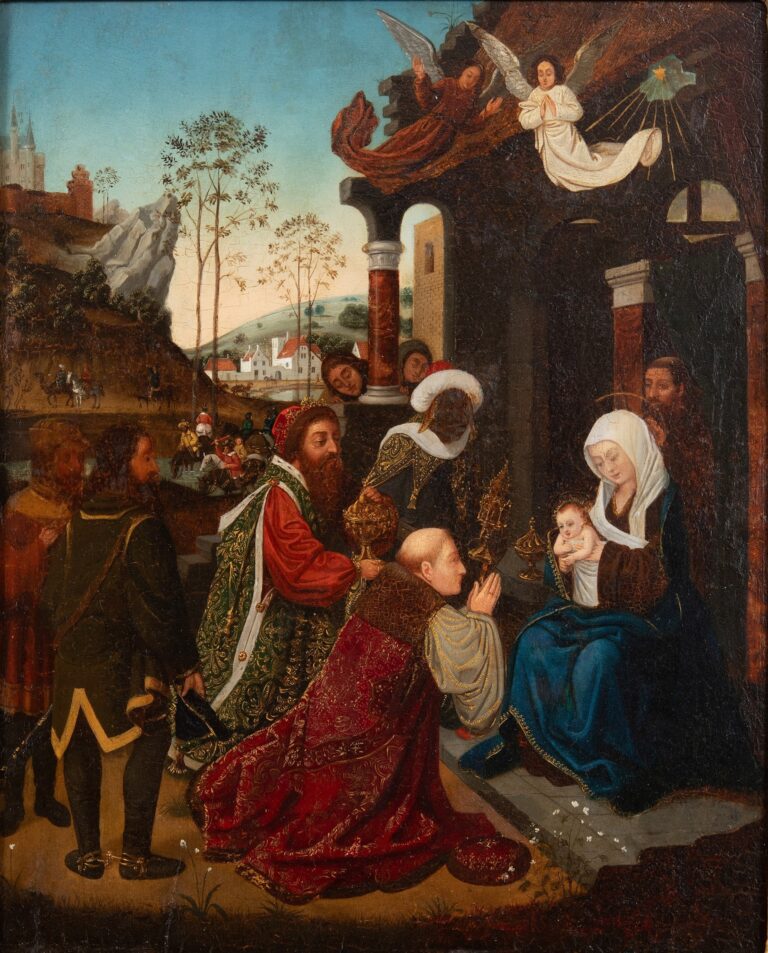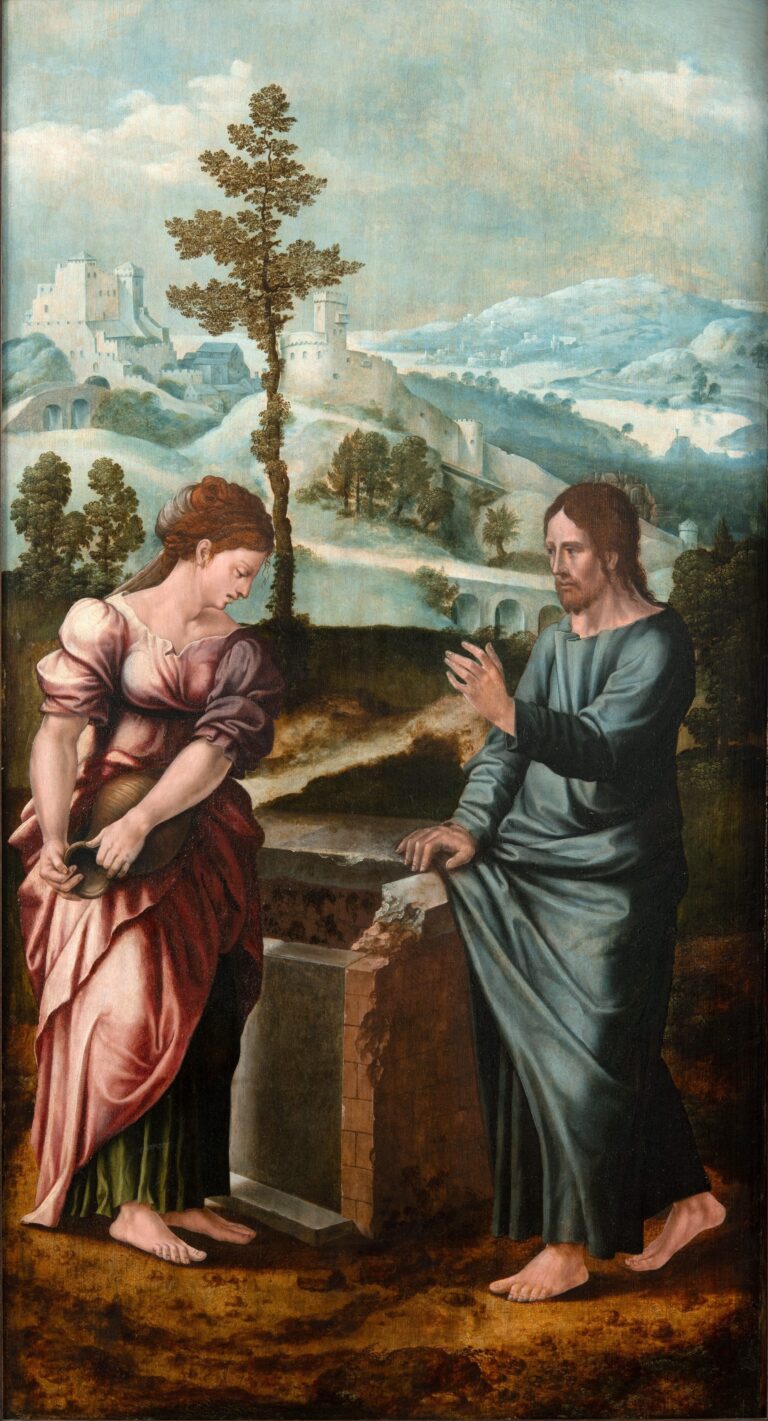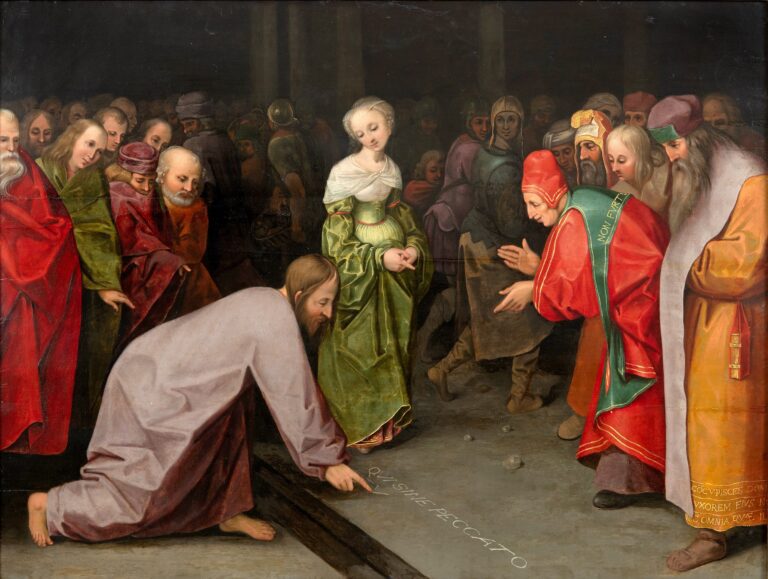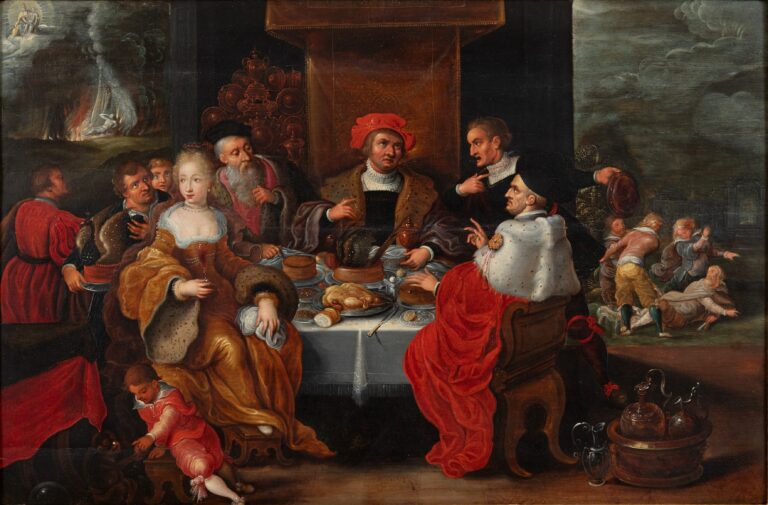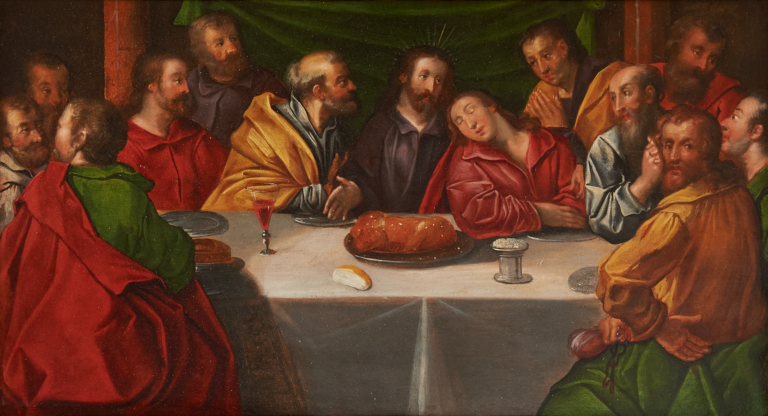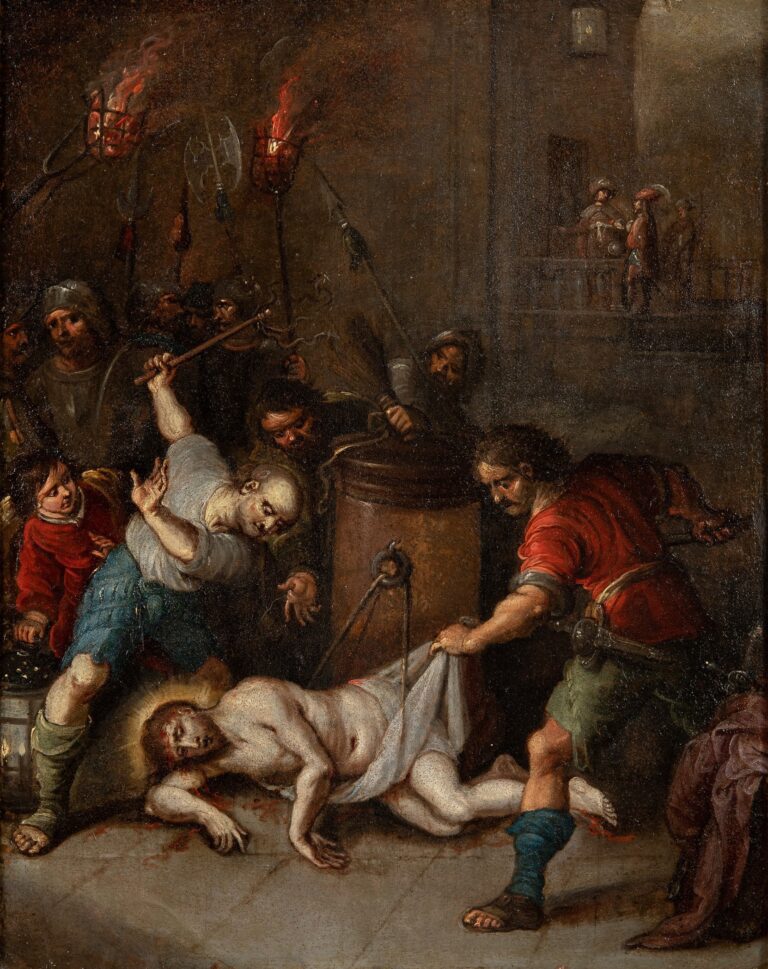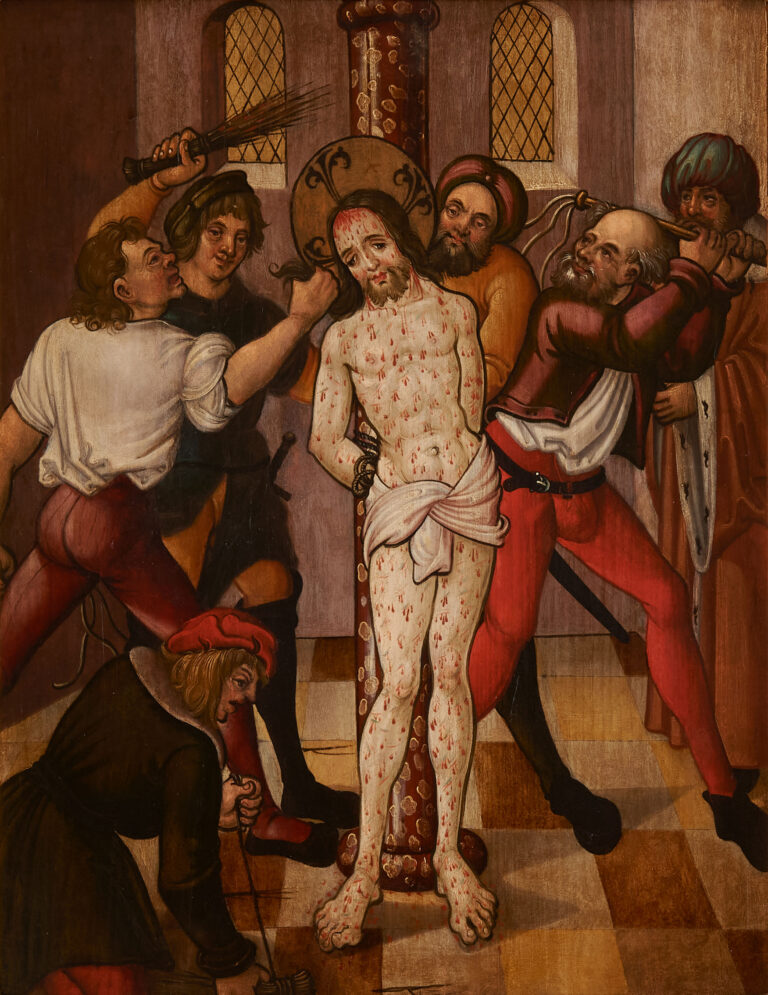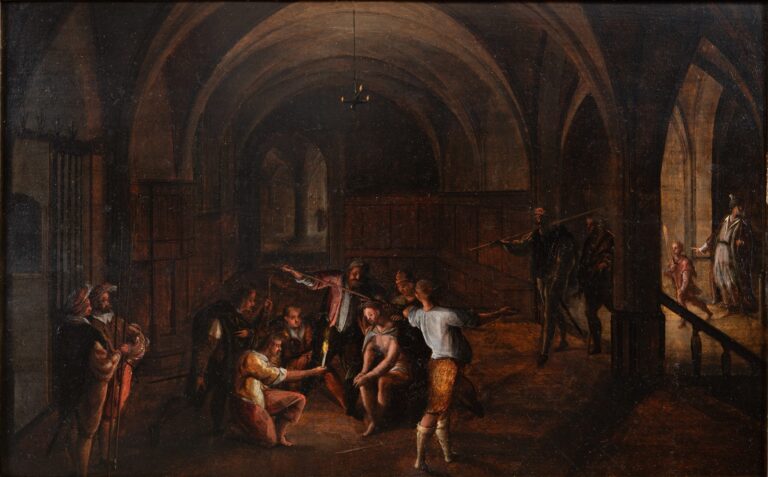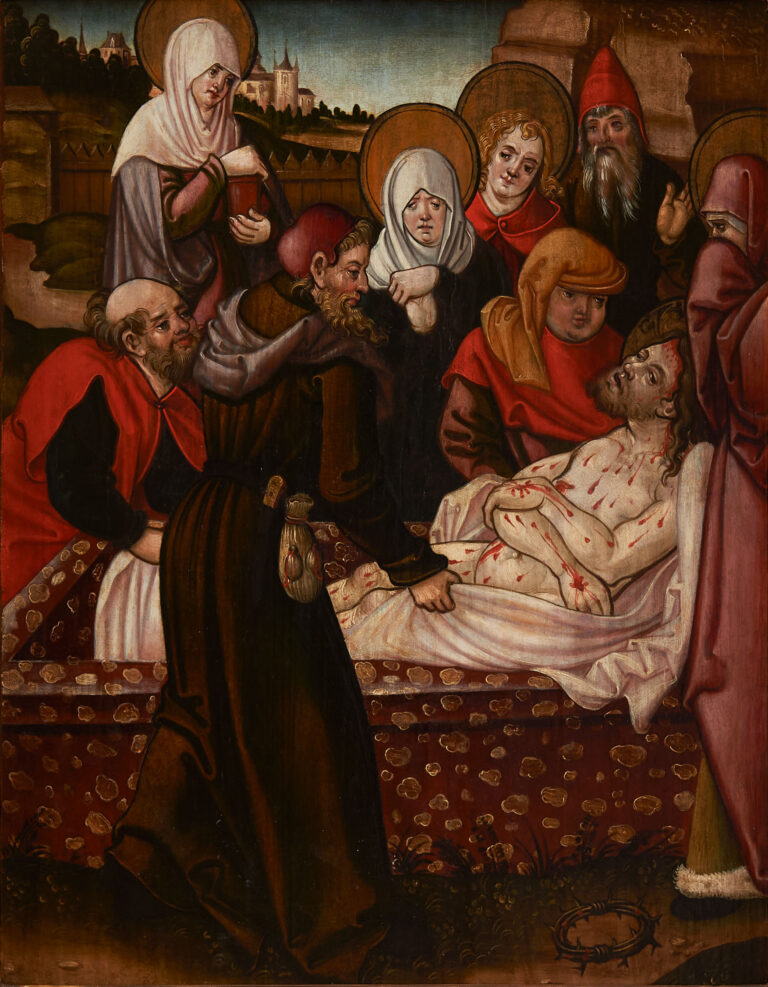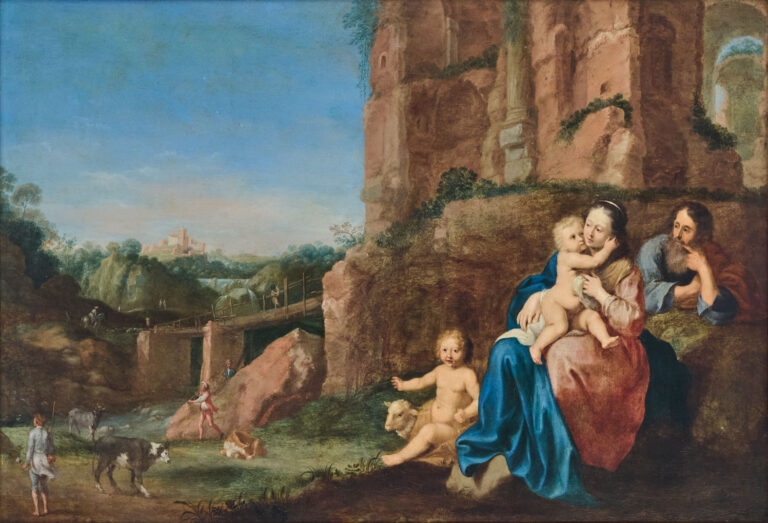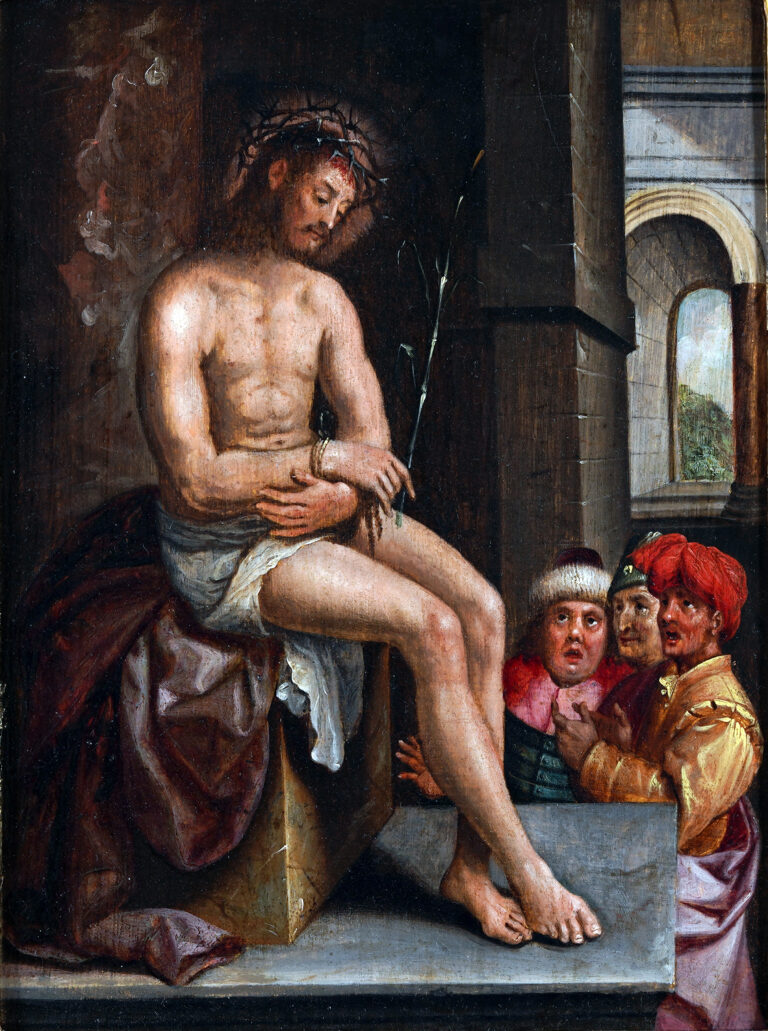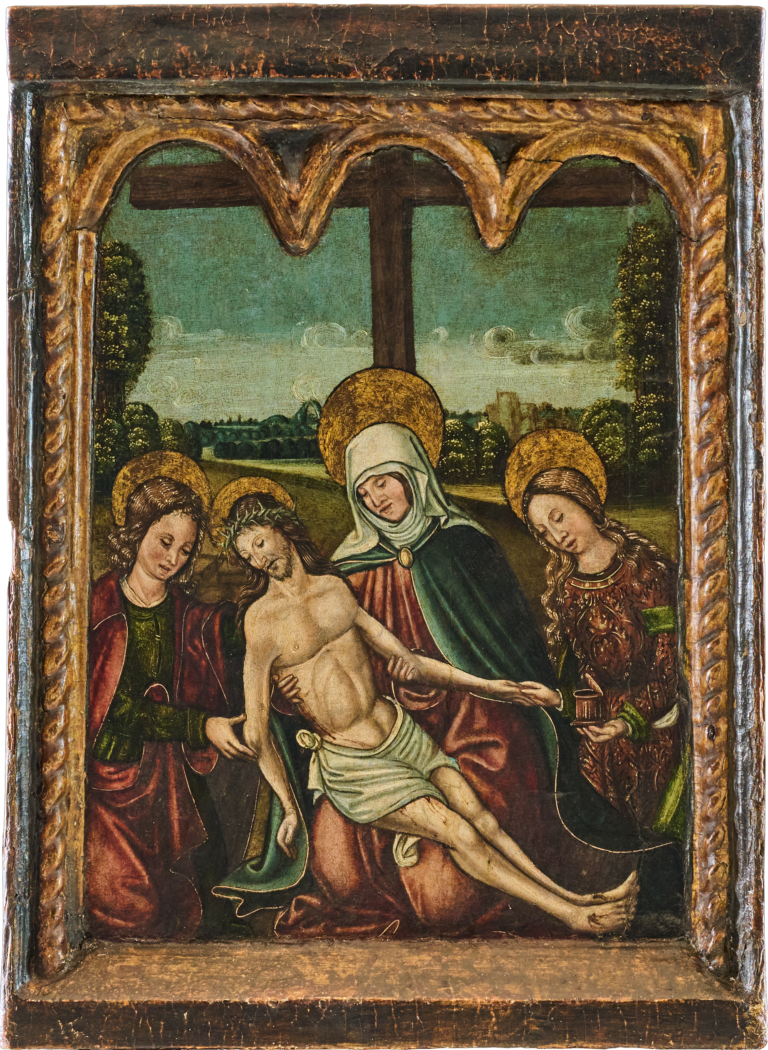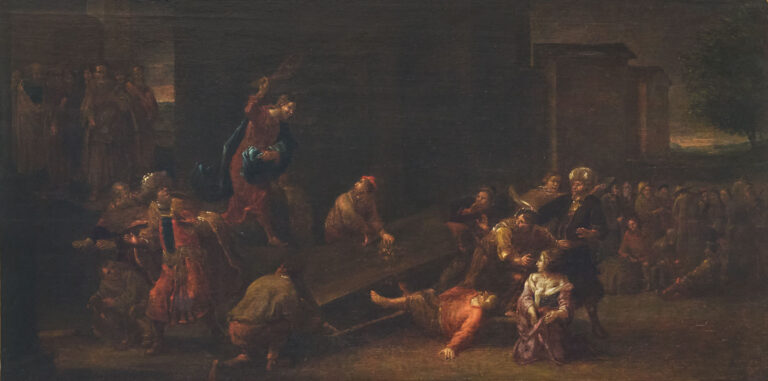Home » Collection » Crucifixion
Crucifixion
Juan de Borgoña (Duchy of Burgundy?; documented in Toledo, 1495 – Toledo, 1536)
This moving Crucifixion scene is a newly discovered work by 16th Century Spanish painter Juan de Borgoña (Duchy of Burgundy?; documented in Toledo, 1495 – Toledo, 1536).
The painting, previously in an Austrian private collection, had been mis-identified as a Flemish work.
With the attribution to Borgoña we now have an exciting addition to this artist’s body of work. The Museo del Prado holds multiple works by him, with others in situ in churches in Toledo and Avila.
This painting marks the mature phase of Borgoña’s career. The scene he has chosen to depict is, of course, a familiar one in Christian Art, and the familiar people are present, mourning Christ: Mary, his mother; Mary Magdalene, and John the Evangelist.
Thanks to Borgoña’s daring choices, however, this is far from a conventional Crucifixion.
The four figures are arranged within a frame-like composition, bordered at the top by the horizontal beam of Christ’s cross and on the sides by the Virgin Mary and Saint John, with Christ in the centre.
The Virgin stands ashen faced, her hands folded in prayer. Her head is bowed, but her gaze is directed upwards at her dead son. Tears stream from eyes swollen with sorrow.
While Mary stands still in her grief, Saint John and Mary Magdalene are full of both motion and emotion. John twists his body, his knees turned outward toward us and his torso angled toward Christ . He too has tears running down his cheek, and we see them just before he is about to wipe them away with the white cloth wrapped around his fingers. In his other hand he holds an anachronistic book.
At Christ’s feet is the ever-loyal Magdalene, who has wrapped herself around the cross. She kneels among scattered bones and a skull, placed there by Borgoña as Golgotha was, in Hebrew, “the place of a skull” (John 19:17). Her oval eyes look up at Christ, with a solitary teardrop on its way to her blushed cheek. With one arm she has reached around the cross to touch Christ’s foot (nailed to the wood), while she extends her other palm outward toward us as if to warn us not to look.
Yet we cannot help but do so, as we follow her gaze upward to Christ’s lifeless body. Blood flows everywhere: from his four hands and feet, all nailed to the cross; from his crown of thorns, onto his forehead and down his neck to his chest; and from his side, which has just been pierced by a Roman spear. Christ’s eyes are closed, and his head slumps to one side: his suffering is over.
Meanwhile, in the background and beneath a darkened sky (the noonday darkness described in the Gospels), Roman soldiers pass by a free-standing temple on their way back to the walled city of Jerusalem. The soldiers talk among themselves, unbothered by the suffering they have left behind; closer to the city one of them holds a ladder used in carrying out the crucifixion.
Borgoña has rendered this sombre scene with vibrant colours: three golden halos; the Virgin’s characteristic blue; the green of the Magdalene’s elegant dress; and, most striking of all, Saint John’s resplendent red tunic and golden-blonde hair. This is a Saint John unlike any other in Spanish painting. Borgoña is presumed to have spent time in Italy, as his later work (such as our painting) shows Tuscan and Umbrian influence. Here our Saint John’s golden locks echo those of Raphael’s beautiful Madonnas. It is another bold choice in a painting that, even after nearly five centuries, still stands as a daring interpretation of the most famous scene in Christendom.
Provenance: Austrian private collection from at least 1972 until 2024
We thank José Gómez Frechina for the attribution to Borgoña. Certificate available on request.
Currently under appraisal. Enquiries welcome.
Medium
Oil on Panel
Painted Surface
91.4 × 76.8 cm (36 × 30.25 inches)
Framed
101.6 × 87.6 cm (40 × 34.5 inches)
Make an enquiry about this piece
Share this piece
Home » Collection » Crucifixion
